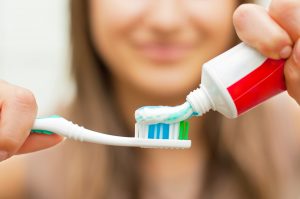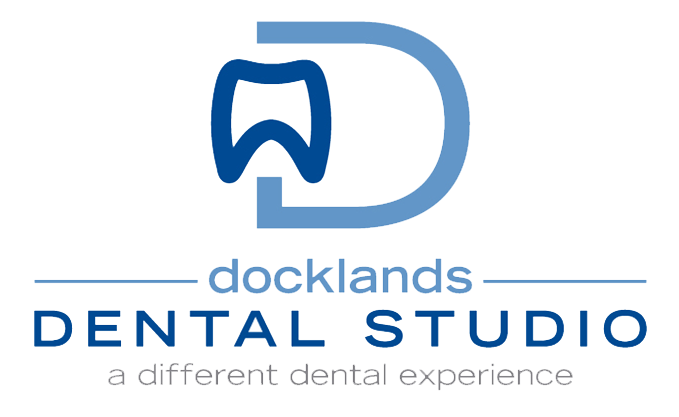As you know, Australia is one of the many countries in the world that add fluoride to the water supply as a public health benefit. In fact, several locations have naturally occurring fluoride in their water supply already, and require only a small supplemented amount, if any. Fluoride is also the main active ingredient in most toothpastes, and it is a dentist’s favorite preventive treatment for strengthening tooth enamel.
There are plenty of people who oppose fluoride and claim it to be a “toxic poison” that damages the organs and bones. They are right in the sense that fluoride is capable of poisoning the human body, but only in higher doses than one can attain from drinking water. This post is not for those who have already decided to take an anti-fluoride stance (I imagine few of them are dentists), but rather for anyone who’s ever wondered how the little fluoride ion can have such a powerful effect on our tooth enamel.

1. Fluoride Promotes Remineralisation
In our last post, we discussed how a low pH (acidic) environment can leach minerals from tooth enamel and create cavities. This is referred to as demineralisation. Fluoride ions do the opposite. Fluoride encourages minerals to be deposited back into the tooth where mineral content has been lost.
When you receive a fluoride treatment at the dentist, a thin layer of fluoride is applied to the teeth, where it is quickly absorbed. The presence of fluoride alone in your enamel is a positive thing, but it also goes a step beyond, and attracts other minerals to the teeth, such as calcium. Tooth enamel is primarily hydroxyapatite, a crystalline form of calcium phosphate. Therefore, attracting calcium into the tooth is an excellent way to make sure its structure remains strong.
Calcium from dairy products can also help remineralise the teeth, but don’t go replacing your toothpaste with cheese! Fluoride’s value is in the way it attracts calcium into the enamel on a chemical level. Simply surrounding your teeth with calcium does not work as effectively as the fluoride ion.
2. Fluoride Makes Tooth Enamel More Resistant
So, we’ve explained how fluoride remineralises enamel by attracting calcium into the teeth, yes? When this happens, fluoride does not just “replace what was lost;” it also creates something new.
We mentioned that tooth enamel is made up of hydroxyapatite (a crystalline form of calcium), but when fluoride remineralises a tooth, it creates a new mineral called fluorapatite. Using fluoride actually changes the composition of your tooth enamel!
The good thing about this process is that fluorapatite is more resistant to bacterial acids than the hydroxyapatite you were born with, so to speak. Fluorapatite is resistant to a pH of 4.5, whereas hydroxyapatite is only resistant to pH 5.5. That’s a measurable difference that makes quite an impact. When you consider that the pH scale only has 14 increments, a difference of 1.0 gives you considerably greater resistance to acid damage.
3. Fluoride Inhibits Bacteria
Beyond fluoride’s ability to chemically alter the teeth, it also plays a role in controlling mouth bacteria. Bacteria feed on sugars (or starches that convert to sugars), but the presence of fluoride inhibits the enzymes that are necessary for bacteria to metabolise those sugars. Therefore, fluoride controls mouth bacteria’s ability to eat, grow, and multiply. With just regular use of an OTC fluoride-containing toothpaste, you are actively cutting off mouth bacteria from their food source.
How Does Drinking Fluoridated Water Help Your Teeth?
It’s obvious how a fluoride treatment at the dentist or direct contact with toothpaste can apply fluoride to the teeth, but why do we drink it? How does ingesting fluoride affect the teeth?
When you drink fluoridated water (or eat the fruits and vegetables grown with fluoridated water) it puts a small amount of fluoride into your saliva. This means that as long as your mouth stays well lubricated with saliva, you will be receiving some level of enamel strengthening and remineralisation, all the time.
Bottled Water and Fluoride
If you drink only bottled water, you may not be ingesting any fluoride. Mineral water from a spring or other natural source may contain naturally occurring fluoride, but any waters labeled to be distilled, vaporised, ionised or “purified” have had their naturally occurring fluoride ions removed.
Is Fluoride a “Poison”?
If you search “fluoride” on the internet, you’re as likely to find groups and authors arguing that fluoride is dangerous to one’s health as you are its proponents. The problem with thinking of fluoride as a “poison” is that water and salt can also be considered poisons if you ingest too much of them. Carbon dioxide gas is a natural by-product of breathing, but excessive CO2 exhaust from non-human sources harms our environment. It’s not so much that these substances “are toxic” as it’s a matter of quantity and equilibrium.
At present, the World Health Organisation continues to recommend ingesting fluoridated water for its health benefits, and you can read its report on fluoride in drinking water to understand how it came to the conclusion to do this. There is a reason why toothpastes and rinses contain the concentration of fluoride ions they do, and there’s a reason why infants and toddlers are recommended to use non-fluoridated toothpastes until they are old enough to spit it out. We all know that ingesting too much fluoride can be dangerous—but this is also the case with many other helpful minerals and substances.
If, for whatever reason, you choose to avoid fluoridated water, let your dentist know, so we can help you make sure you get the maximum benefit from direct-contact fluoride. For example, one simple tip that can help you benefit from fluoride exposure involves how you brush your teeth. When you brush your teeth, do not rinse away the toothpaste right away, but rather let it sit on the teeth for a few extra minutes. The longer your teeth are in contact with the fluoride, the greater the benefit.
Questions About Fluoride?
Do you have more questions about fluoride and its impact on your teeth? Visit Docklands Dental Studio to learn more. Call our office at 0488-799-487 to make an appointment!
If you are in Port Melbourne or South Wharf, it’s quite easy to get to our dental practice via the Web Bridge (foot or bike) or by Wurundjeri Way (by car). Call us today for dental care and education for the whole family!
Also published on Medium.
